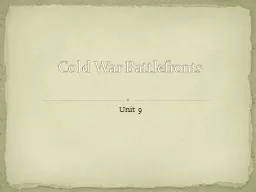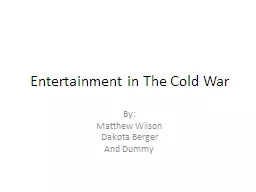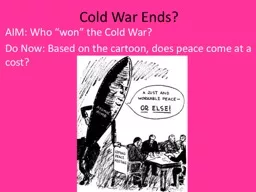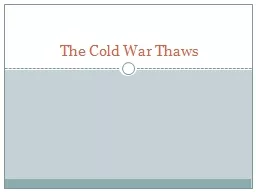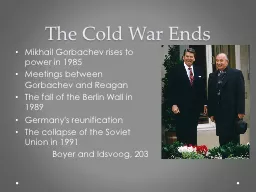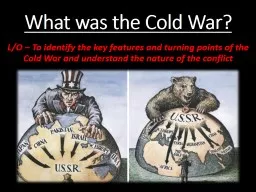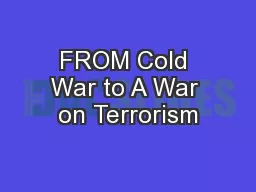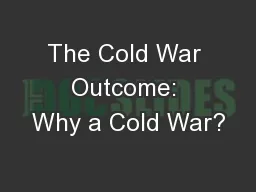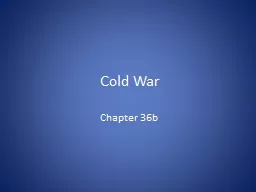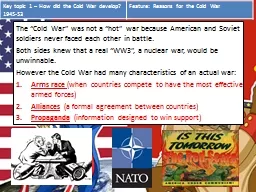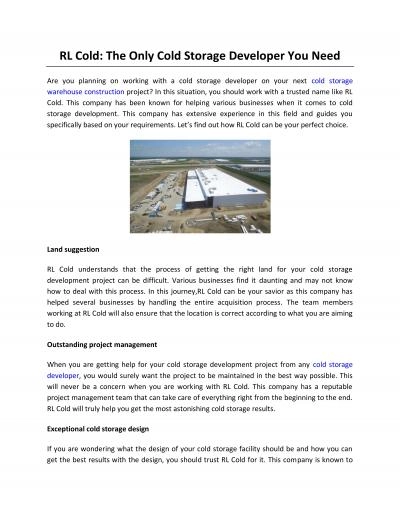PPT-Unit 9 Cold War Battlefronts
Author : pasty-toler | Published Date : 2019-12-13
Unit 9 Cold War Battlefronts The Korean War begins After defeating Japan the US and Russia split Korea into two zones Russia occupied the North and US forces the
Presentation Embed Code
Download Presentation
Download Presentation The PPT/PDF document "Unit 9 Cold War Battlefronts" is the property of its rightful owner. Permission is granted to download and print the materials on this website for personal, non-commercial use only, and to display it on your personal computer provided you do not modify the materials and that you retain all copyright notices contained in the materials. By downloading content from our website, you accept the terms of this agreement.
Unit 9 Cold War Battlefronts: Transcript
Download Rules Of Document
"Unit 9 Cold War Battlefronts"The content belongs to its owner. You may download and print it for personal use, without modification, and keep all copyright notices. By downloading, you agree to these terms.
Related Documents

